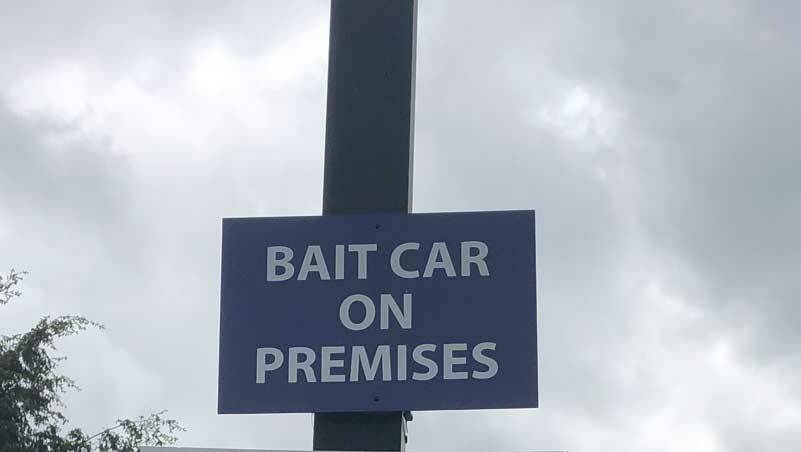By Morf Morford, Tacoma Daily Index
Hot cars
“Hot”, when used to describe cars, has multiple meanings; it could refer to a fast, or beautifully detailed car, or one that is stolen, or even, as in the use I have for it in this case, literal temperature.
It’s not something on our minds in November, but in the summer months we might open up and enter our car only to find it too hot.
Multiply that by the several thousand cars parked around the typical city anywhere in the world.
And it’s not just cars that collect heat on a summer day; parking lots can be a sweltering, even dangerous heat zone.
In summary, that’s a lot of energy that accumulates, and even becomes a nuisance, even a threat.
And it’s a lot of energy that could be captured and used.
The French Senate recently approved a bill requiring parking lots with a minimum of 80 spaces to be covered by solar panels.
Parking lots with 80-400 spaces will have five years starting in July 2023 to be in compliance. Any larger lots will have less time, only three years from the same date.
In all cases, at least half the area of the parking lot must be covered with solar panels. The government says the plan, aimed primarily at parking lots off freeways and major routes, could generate up to 11 gigawatts — the equivalent of 10 nuclear reactors.
As you might guess, there are more than a few complications. If, for example, outdoor parking lots have”technical, safety, architectural, heritage and environmental constraints,” they may be exempt.
Lots shaded by trees over at least half their area may escape the requirement, as will parking lots for trucks.
And in those cases when the installation of panels “cannot be met under economically acceptable conditions” (something that could cover a wide range of scenarios), they could also be excluded.
Life in the shade
Besides collecting solar energy, these panels would provide shade (and all weather protection) for cars.
Parking lots covered with solar panels are not yet that common. But they could, and presumably should, be almost everywhere.
One of the largest examples being the Belgium Zoo parking lot. Its 7,000 parking spaces are 70 percent covered by 62,000 overhead solar panels that generate 20 megawatts of peak power — much more than is required for the zoo.
Disneyland Paris has revealed a similar project, to be built in stages through 2023, has already been put into operation. When completed, the array is expected to generate 31 GWh of electricity per year upon completion – around 17% of the park’s current electricity consumption.
If you’ve been to a Disneyland – or any theme park, sports stadium or shopping mall, you know how vast those parking lots can be. And you probably have a good sense of how much electricity those places use.
Meanwhile in Connecticut
Yale University researchers have found that more than one-third of Connecticut’s electricity could come from solar-covered parking lots.
According to another study, the United States could get 85% of all electricity from solar power on already developed rooftops and carports.
It’s not just Ivy League liberals
Seven Walmart stores in California have completed solar energy systems totaling 6.5 MW at a cost of $10 million. These solar arrays will power stores in Burbank, Calexico, North Highlands, Perris, Placerville, Sacramento, and Wasco.
And if you’ve been to any of those cities, you have to wonder why it took so long to turn those steaming parking lots into perpetual revenue streams.
For smaller parking lots
Solar arrays are not just for the massive parking lots.
A much smaller version, made by Japanese energy company Sinanen, offers a scalable solar carport that can host a minimum of four vehicles and can be deployed in the parking areas of factories, apartments and commercial buildings. If connected in series it may be utilized to give shelter to hundreds of vehicles. You can see details on this system here.
UPTIS: Unique Puncture Proof Tire System
And, as glamorous as that gleaming Tesla might look in front of your house, wouldn’t you be happy to never have a flat tire again?
Tire maker Michelin’s airless tires have been in development for over a decade. They might look a bit like toy car wheels, and drivers so far have noticed no difference from standard tires. But they last a lost longer and can be made of entirely recycled materials. Which is important when you consider that the USA alone produced over 260 million scrapped tires in 2019.
And these puncture-proof tires would lower maintenance costs which would in turn lower costs for vehicle fleets, like buses and rental cars.
UPTIS combines an aluminum wheel with a special “tire” around it. Made with a plastic matrix laced with — and reinforced by — glass fibers. This outer tire is designed to be flexible while strong enough to support the car.
According to Michelin, you should be able to get them on your car by 2024.





